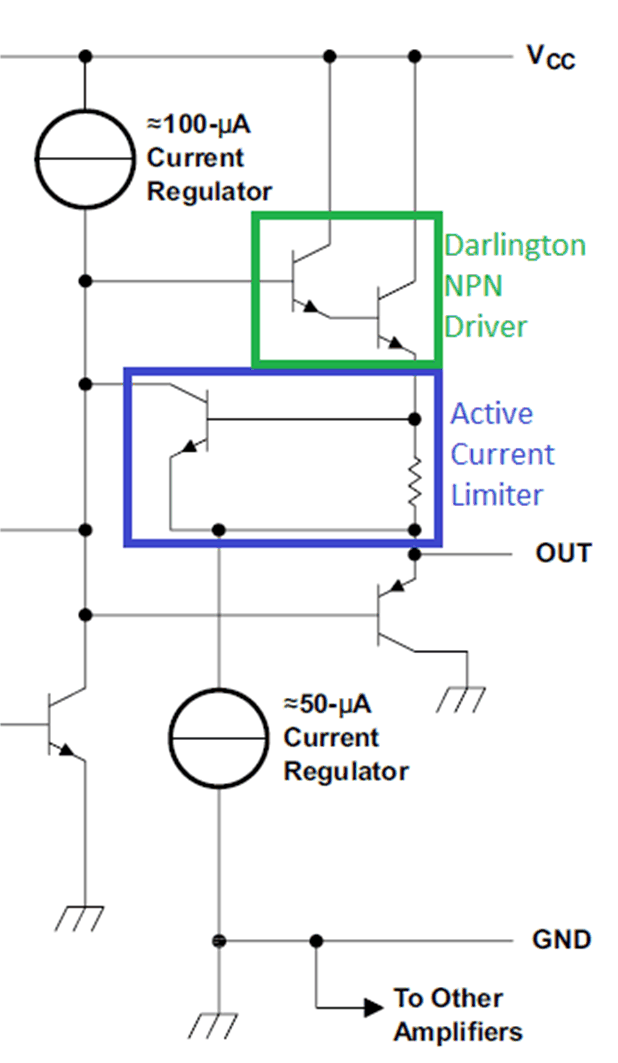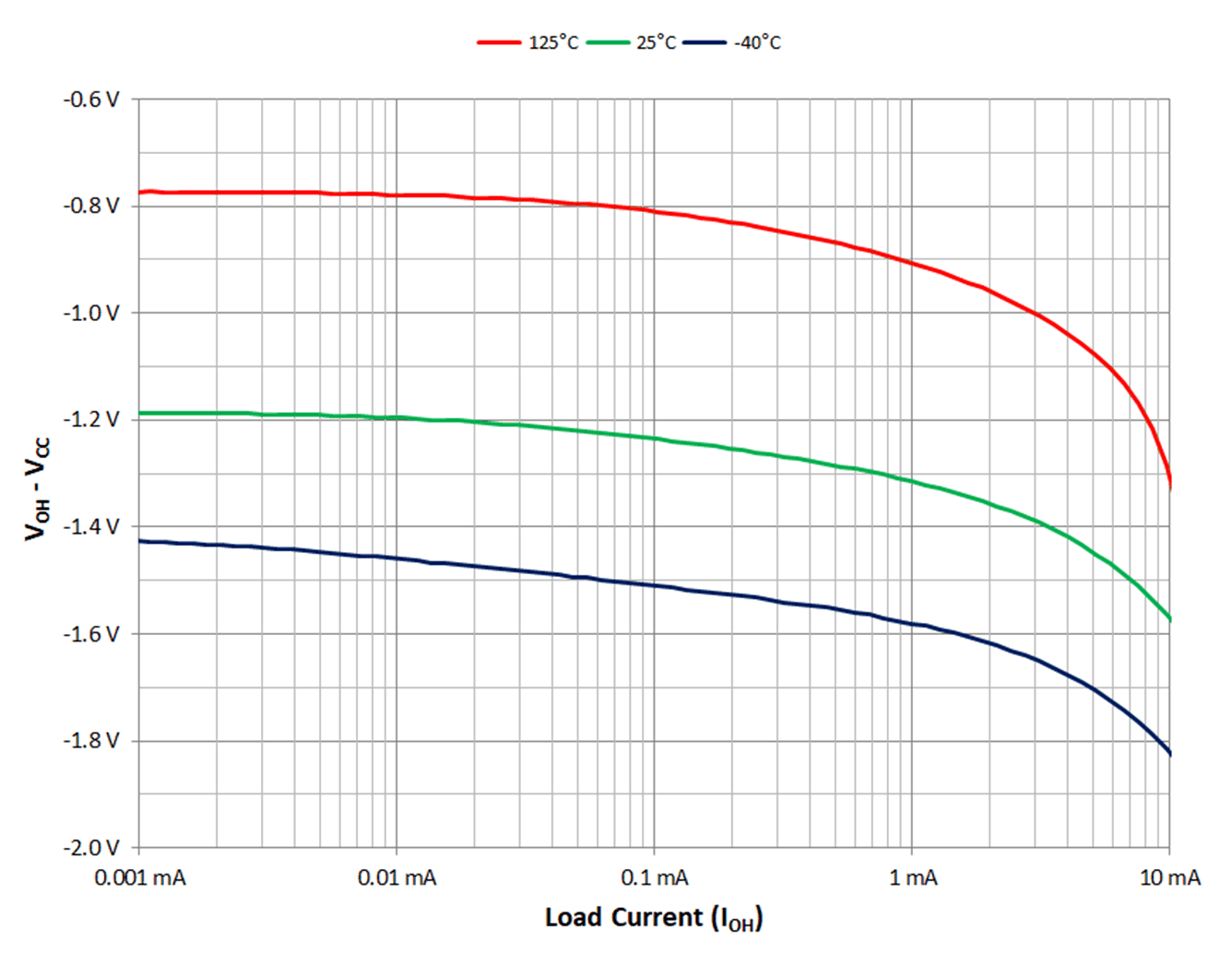SLOA277B january 2019 – july 2023 LM124 , LM124-N , LM124A , LM158 , LM158-N , LM158A , LM224 , LM224-N , LM224A , LM258 , LM258-N , LM258A , LM2902 , LM2902-N , LM2902-Q1 , LM2902K , LM2902KAV , LM2904 , LM2904-N , LM2904-Q1 , LM2904B , LM2904B-Q1 , LM2904BA , LM321 , LM324 , LM324-N , LM324A , LM358 , LM358-N , LM358A , LM358B , LM358BA , TS321 , TS321-Q1
3.3 Output Stage Schematic, VOH and IOH
Unlike most new op amps that have a rail-to-rail output, this family of op amps has a high level output voltage that is significantly lower than the VCC power rail, regardless of the load sourcing current. Figure 3-4 shows the Darlington NPN transistors that provide sourcing current. An active current limiter helps protect the op amp and load from overcurrent conditions.
 Figure 3-4 Schematic of Output Driver Stage with Highlighted Source Driver and Current Limiter
Figure 3-4 Schematic of Output Driver Stage with Highlighted Source Driver and Current LimiterThe Darlington NPN provides a low output impedance and the base current flows to the output load for higher efficiency. This setup has a high headroom requirement that significantly reduces the VOH level. The two base emitter junctions in the Darlington NPN have a combined temperature coefficient of approximately –4 mV/°C. Therefore VOH has an equal and opposite temperature coefficient of 4 mV/°C. Per the data sheet Electrical Characteristics tables, the VOH level is VCC – 1.5 V or better with a 2-kΩ load to ground when VCC is 5 V at 25°C; this is 1.75 mA. The typical VOH level varies with load current and also varies with temperature as seen in Figure 3-5. VOH performance relative to VCC is independent of VCC, which means the set of curves in Figure 3-5 apply to the entire operating range of VCC.
 Figure 3-5 Plot Showing VOH Relative to VCC (VOH - VCC) vs Load Current (IOH)
Figure 3-5 Plot Showing VOH Relative to VCC (VOH - VCC) vs Load Current (IOH)